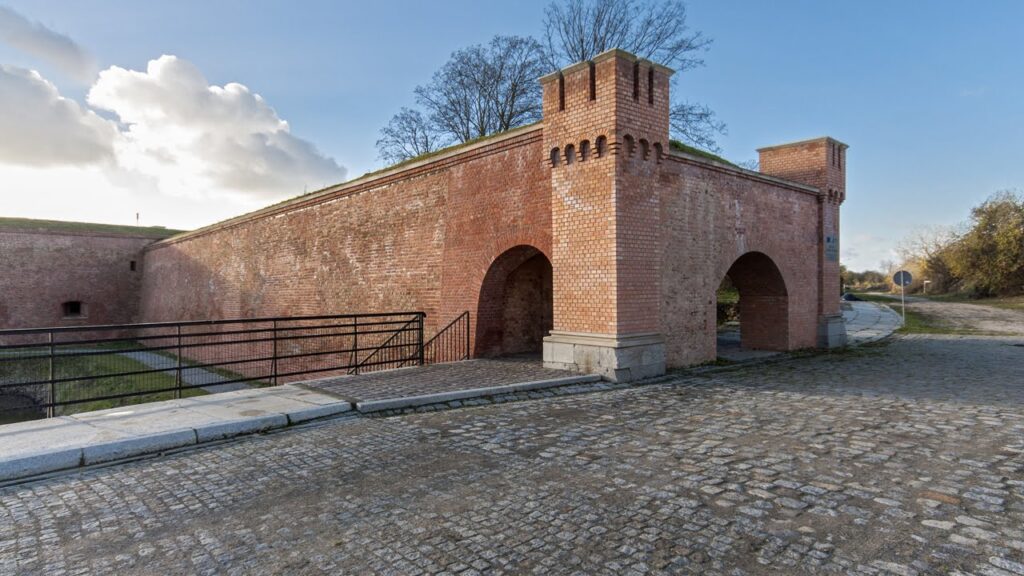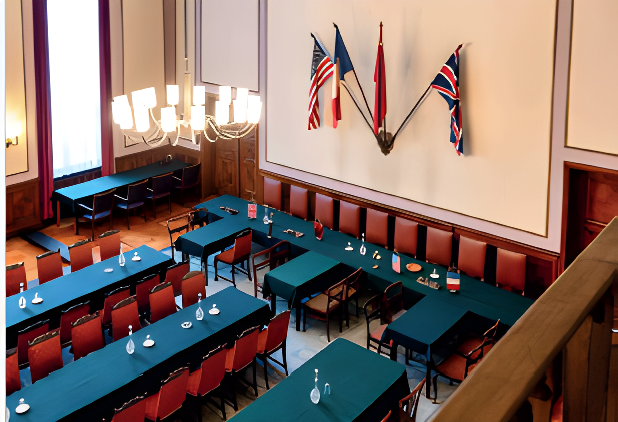The exchange program taking place in the border area between Poland and Germany offers young history enthusiasts the opportunity to delve deep into the historical events that shaped our modern world, focusing on East/West perspectives and the end of World War II.
Participants will engage in a variety of creative projects, including video production, podcast creation, and historical storytelling, enabling them to explore and express the human stories behind the conflict.
As the exchange traverses the landscapes where the Russian advance towards Berlin took place, participants will gain invaluable insights into the war’s legacy. This program isn’t just about learning history; it’s about bringing it to life through modern media. As a participant, you’ll work collaboratively with fellow participants, sharing perspectives and improving your skills in storytelling and digital media.
Whether you’re interviewing locals with personal stories to tell, capturing the essence of historical sites on film, or recording narratives and interviewing people for a podcast, you’ll contribute to preserving these vital memories for future generations. Join us in this educational adventure, and be a part of a living history that continues to resonate today.
The exchange begins in the town of Kostrzyn nad Odrą, a key location during the final months of the Second World War. All sites included in the program are linked to significant events from the winter and spring of 1945, particularly the advance of the Red Army and its allies from the east toward Berlin. The Warta-Oder region, shaped by war and displacement, became part of the Soviet occupation zone after 1945, when the German population was replaced by Polish settlers from the former eastern regions of Poland. Today, the region serves as a space of remembrance and dialogue, reflecting on its complex 20th-century history.
The first day will be dedicated to introducing this historical and cultural context, followed by a session in which participants explore the goals of the exchange and take part in content-creation workshops.

The day begins with a visit to the Küstrin Fortress Museum in Kostrzyn nad Odrą, known as the “Pompeii on the Oder”. In early 1945, the fortress was a key strategic point during the Red Army’s advance toward Berlin. After fierce fighting and heavy bombing, the fortress was captured by Soviet forces in March. Following the war, the old town was abandoned for decades until rediscovered after 1989. The museum now tells the story of the fortress and its wartime destruction.
In the afternoon, the group will visit Stalag III C – a former German prisoner-of-war camp for privates and non-commissioned officers. The camp held thousands of prisoners of various nationalities both before and during the war, and was liberated by Soviet troops on 31 January 1945.

On this day, participants will visit Słońsk (formerly Sonnenburg), a town with a long history marked by a painful chapter: Nazi prison and concentration camp. Initially a penitentiary for political activists during the Weimar Republic, it became the first German concentration camp after Hitler’s rise to power. Later, it returned to being a prison and site of executions. The most tragic event occurred on the night of 30–31 January 1945, when SS men executed 819 prisoners of various nationalities.
The group will visit the Martyrdom Museum, dedicated to remembering the victims of this Nazi prison and camp. With the guidance of a local educator and museum staff, participants will engage in workshops to create audio and visual content, deepening their understanding of the site’s history.
Later, a visit is planned to the nearby lapidarium located on the grounds of the former German cemetery in Słońsk.

This day will start with a guided walk through the memorial “Theatre of War Castle Klessin”, established on the former site of a manor to commemorate the completely destroyed in 1945 village of Klessin. At this memorial site, participants will explore the history of the German-Soviet battle and the site’s restoration by creating audio-visual content that helps them better understand and share what happened in Klessin. Along the way, we will also visit the German war cemetery in Lietzen.
The second part of the day will include a visit to the Seelow Heights Memorial and Museum, honoring one of the last and largest battles of the Second World War on German soil, which started the Russian assault on Berlin.
Participants will also visit the Seelow History Station Museum, which focuses on the history of the Seelow region, particularly the events surrounding the Battle of Seelow Heights.

The last day will be filled with reflections on the experiences gained during the exchange. We will travel to Berlin to visit the Berlin-Karlshorst Museum, located in the former officers’ casino building where the war in Europe officially ended on 8 May 1945. It was here that the Wehrmacht signed its unconditional surrender to the four victorious powers. The historical rooms have been preserved in their original state.
Today, the museum presents the complex history of German-Soviet relations, particularly during the years 1941–1945, offering valuable historical insights in a space of remembrance and education.

Sign up and join one of the exchange trips across Europe to keep the history of the Second World War alive!
© LRE Foundation - 2025